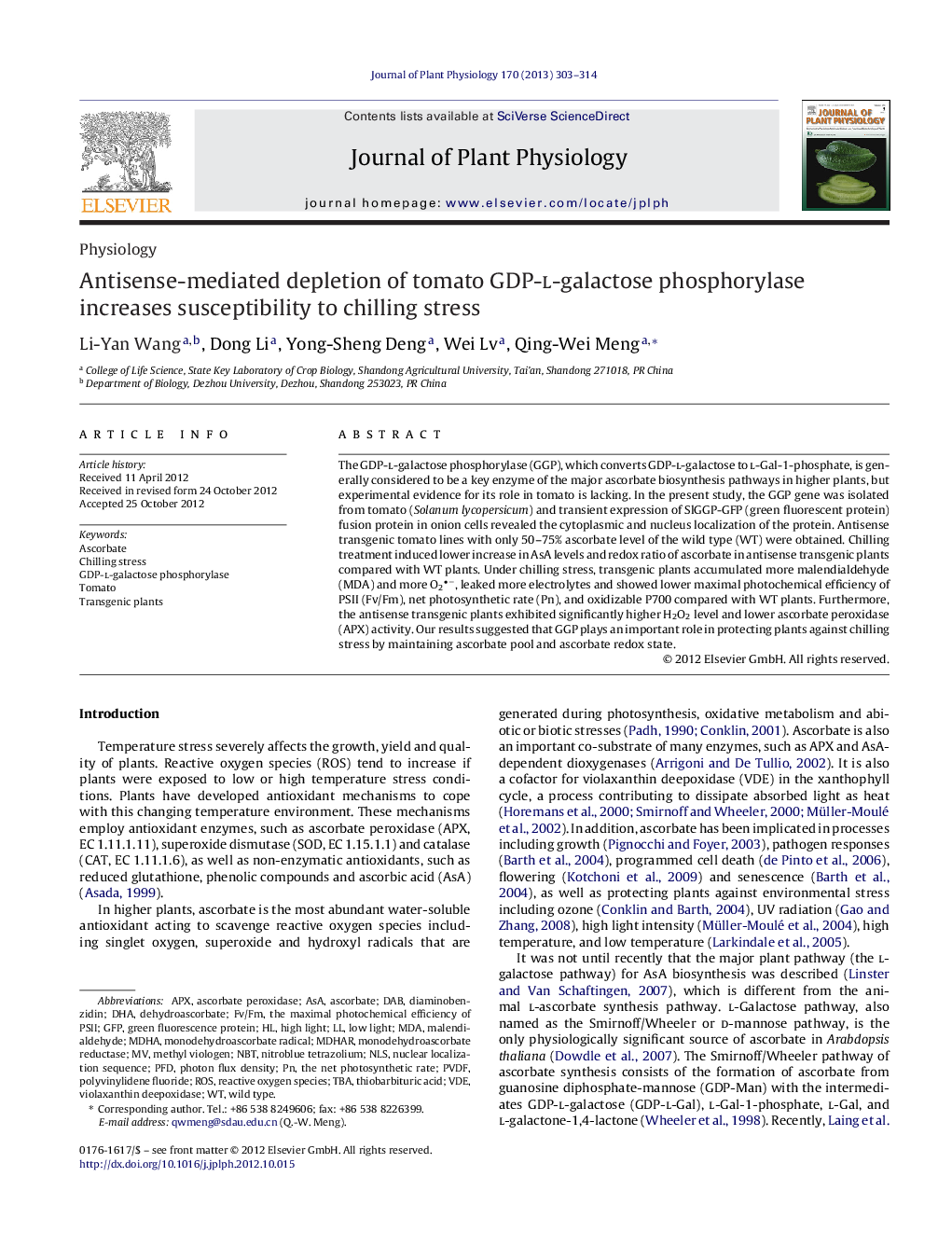| Article ID | Journal | Published Year | Pages | File Type |
|---|---|---|---|---|
| 2056170 | Journal of Plant Physiology | 2013 | 12 Pages |
The GDP-l-galactose phosphorylase (GGP), which converts GDP-l-galactose to l-Gal-1-phosphate, is generally considered to be a key enzyme of the major ascorbate biosynthesis pathways in higher plants, but experimental evidence for its role in tomato is lacking. In the present study, the GGP gene was isolated from tomato (Solanum lycopersicum) and transient expression of SlGGP-GFP (green fluorescent protein) fusion protein in onion cells revealed the cytoplasmic and nucleus localization of the protein. Antisense transgenic tomato lines with only 50–75% ascorbate level of the wild type (WT) were obtained. Chilling treatment induced lower increase in AsA levels and redox ratio of ascorbate in antisense transgenic plants compared with WT plants. Under chilling stress, transgenic plants accumulated more malendialdehyde (MDA) and more O2−, leaked more electrolytes and showed lower maximal photochemical efficiency of PSII (Fv/Fm), net photosynthetic rate (Pn), and oxidizable P700 compared with WT plants. Furthermore, the antisense transgenic plants exhibited significantly higher H2O2 level and lower ascorbate peroxidase (APX) activity. Our results suggested that GGP plays an important role in protecting plants against chilling stress by maintaining ascorbate pool and ascorbate redox state.
